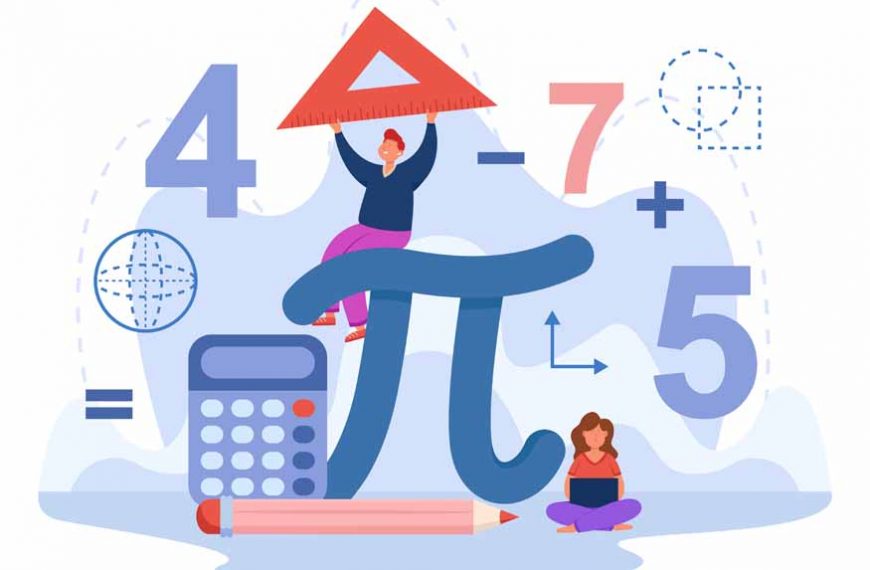Since the beginning of time, Man has been in search of The Unknown.
And so it is with Algebra.
A seemingly constant search for ‘x’. The forever unknown letter from Math class.
From BODMAS to Algebra, our study of Mathematics has evolved over the years.
While the origins of ‘x’ are by and large unknown, there’s plenty about the field of Algebra that we have information about, in today’s world. In this article you will learn all things Algebra, ranging from examples of Algebraic Expressions, to Basic Algebra Formulas.
Tim to brush up on those Algebra lessons you took back in the day! And of course, discover something you hadn’t learned already, about this intriguing branch of Mathematics.
Algebra: The Essentials
What is Algebra? In a nutshell, Algebra is a branch of Mathematics that uses mathematical statements to describe relationships between things that vary. The things that fall under the umbrella of these ‘Variables’, include the relationship between the supply of an object, and its price.
Note: Letters are used when representing the quantity that varies, since it is not a fixed amount.
Algebraic Expressions
Now that we have answered the question ‘What is Algebra?’, it’s time to move on to seeing Algebra in motion. This is achieved through the use of Algebraic Expressions.
Simply put, Algebraic Expressions encapsulate the idea of expressing numbers using Letters or Alphabets, without specifying their actual Values. A combination of both Variables and Constants, can constitute an Algebraic Expression.
Note: The value that is placed before and multiplied by a variable, is a Coefficient.
There are plenty of people who interchangeably use Algebraic Expressions and Algebraic Equations, but both terms are completely different.
To better understand algebraic expressions, here’s a sneak peek into the terminologies that are used in an algebraic expression. Along with each is an example of the same algebraic expression, to demonstrate it more efficiently.
- The Variable. This is a letter whose value is unknown. The term ‘x’ is most commonly used for variables in algebraic equations.
- The Coefficient. This is a numerical value that is used along with a Variable. As touched upon earlier, it is used with the variable.
- The Constant. This is a term in an algebraic expression that has a definite value.
Example: In the expression 10x + 5, ‘x’ is the Variable.
Example: In the expression 10x + 5, ’10’ is the Coefficient.
Example: In the expression 10x + 5, ‘5’ is the Constant.
Types of Algebraic Expressions
Now that we have seen an example of an Algebraic expression along with the terminologies that are used with it, here’s a look at some common types of Algebraic Expressions.
Monomial Algebraic Expression
This expression has only one term.
Example: 2x, 3xy.
Binomial Algebraic Expression
This algebraic expression has two terms that are unlikely.
Example: 5y + 8, y+5, 6y3 + 4
Polynomial Expression
This expression includes more than one term, along with Non-Zero exponents of variables.
Example: ab + bc + ca
Numeric Expression
This expression is characterised by only numbers and operators. There is no variable that is added in any numeric expression.
Example: 2+4, 5-1, 400+600
Variable Expression
This is an expression that contains variables alongside numbers.
Example: 6x + y, 7xy + 6
Basic Algebra Fundamentals
Our introduction to Basic Algebra began roughly in 8th grade or so, when we found Mathematics infused with Letters and Alphabets.
From a young age, we were taught how to count, starting from counting on our fingers. After mastering the art of counting, we went on to learn all about the basic operations of Arithmetic. Namely – Addition, Subtraction, Multiplication and Division.
Most children can answer quickly, that 2+2=4. However, things become a wee bit tricky when they are encountered with a problem like: x+3=5. Of course the answer is 2, but it opens the mind to thinking ‘outside the box.’ This is the very beginning of the study of Basic Algebra.
Basic Algebra Formulas
The following is a list of basic algebra formulas that are commonly used to solve algebraic equations and to find the values of unknown variables.
- a2– b2 = (a – b)(a + b)
- (a+b)2= a2 + 2ab + b2
- a2+ b2 = (a – b)2 + 2ab
- (a – b)2= a2 – 2ab + b2
- (a + b + c)2= a2 + b2 + c2 + 2ab + 2ac + 2bc
Basic Algebra Problems
Now that we have gotten a taste of Basic Algebra, it’s time to get down to the most exciting bit. Its application in real life!
Here’s a look at some Basic Algebra Problems, to help sharpen those Algebra Skills!
Problem One: Filling in the Box
Just like the example we touched upon above, but a tad more complex.
⬜+ 111 = 256
Alternatively, we can also say that x+111 = 256.
Solution: By subtracting the number 111, from 256, we can find what goes into the box, or ‘What is x.’
Thus, 256 – 111 = 145.
Problem Two: How Many Toffees
Hari carried some toffees to school, to distribute for his birthday. His best friend Rohan came along, and took six of them. Now, Hari has forty-two toffees left. How many toffees did Hari have, to begin with?
Solution: Let us assume that Hari brought ‘x’ number of toffees, to distribute to his friends in class. We know that Rohan took away six of his toffees, before he was left with 42.
So, ‘x – 6 = 42’, is the equation we must use to find the solution.
To solve this, what we need to do is add 6 to 42, to come up with the answer. Here, 6+42= 48. Hence, 48 is the number of toffees that Hari had to begin with.
At EuroKids we strongly believe that an understanding of even basic Algebra stimulates the brain, and helps students learn to think in new ways. This helps them in thinking outside the box, and arms them with the ability to craft appropriate responses, when presented with complicated solutions.
















